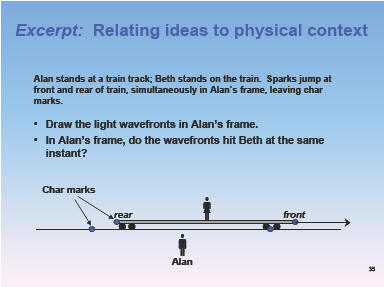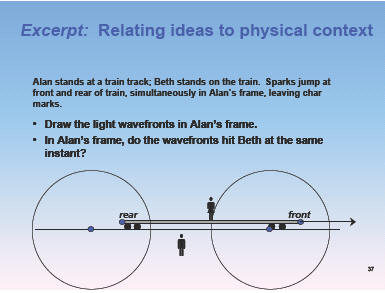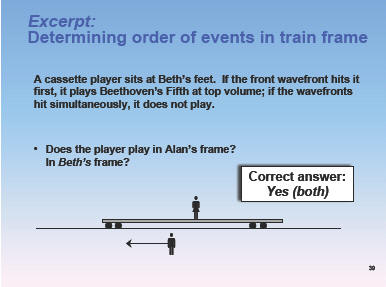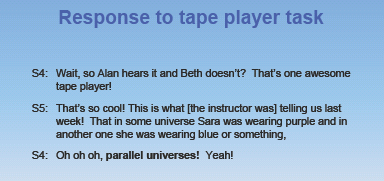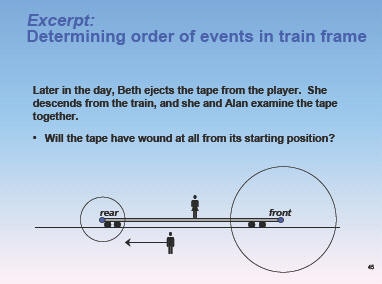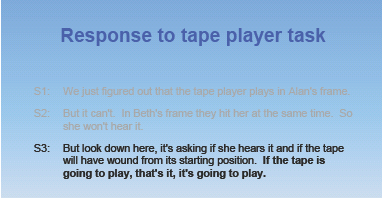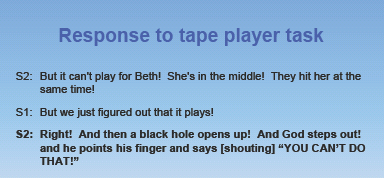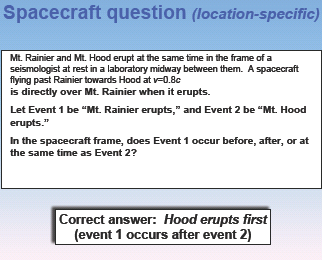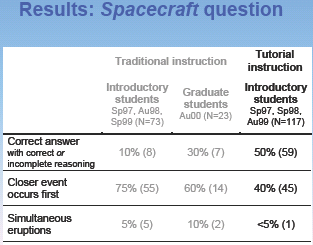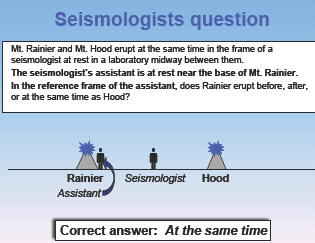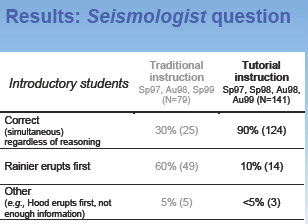|
|
American Association of Physics Teachers |
|
|
Stamatis
Vokos's TALK
-- p. 4 Student Understanding (and Misunderstanding) of Important Concepts in Relativity from the AAPT Topical Workshop: Teaching General Relativity to Undergraduates Syracuse University, July 20-21, 2006 |
|
Slides from Vokos' talk, "Student Understanding (and Misunderstanding) of Important Concepts in Relativity" are given here in five web pages. In the narrative below Click on any subject to go to its page or here for a full PDF version. pg. 1 Vokos noted
that Peter Saulson’s fine
account of a physicist building and extending his understanding
shows that understanding is a subtle, complex process. Vokos showed that
Hilbert's remark is not true for
American students (and probably not for Göttingen students either).
After instruction about the Schwarzschild metric,
47 out of 49 students in a
junior-level relativity course could not satisfactorily answer a
basic question requiring them
to connect local coordinates and Schwarz-schild coordinates. pg. 2 students
need to understand basic concepts from
special relativity (SR) if they are to understand
GR concepts. A key idea is the
spacetime event which is the basis of all
measurements. The SR ideas of a
reference frame and clock synchronization are also of key importance. pg. 3
(2) Do students think simultaneity depends on
the location of an observer relative to a pair of events? The
eruption question was used to study this question. The
data show that both
graduate and undergraduate students are confused about this. (4)
Tape player started by light signals. Is an event the same event in
every reference frame? (Shows PER use of
student scripts to
probe
understanding.) pg. 5 Conclusions: Student preconceptions strongly affect their learning of special and general relativity. Without a coherent framework for the key ideas many students will never understand SR or GR. |




